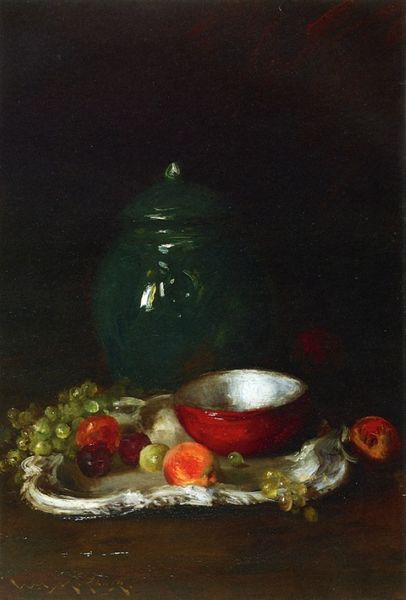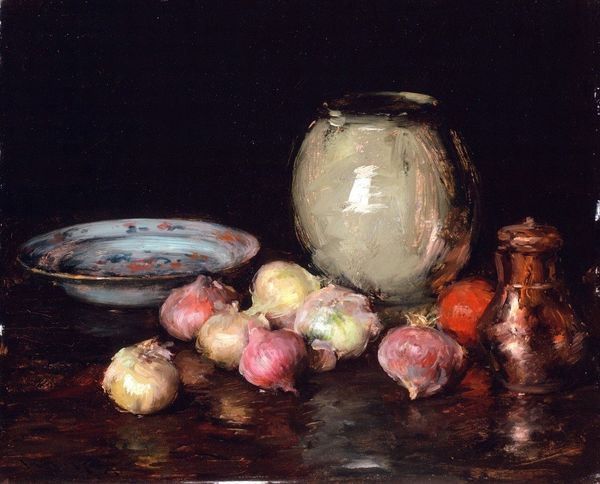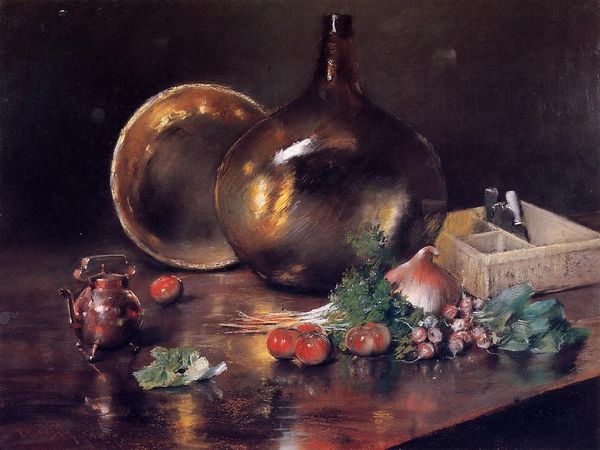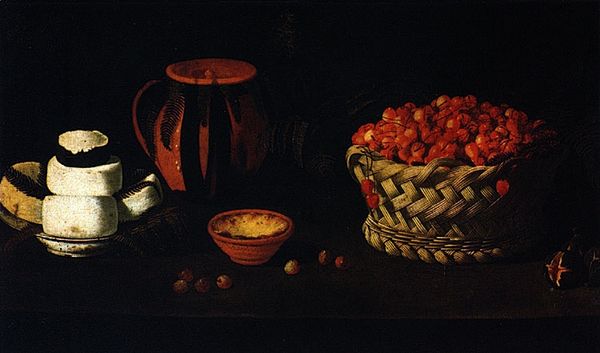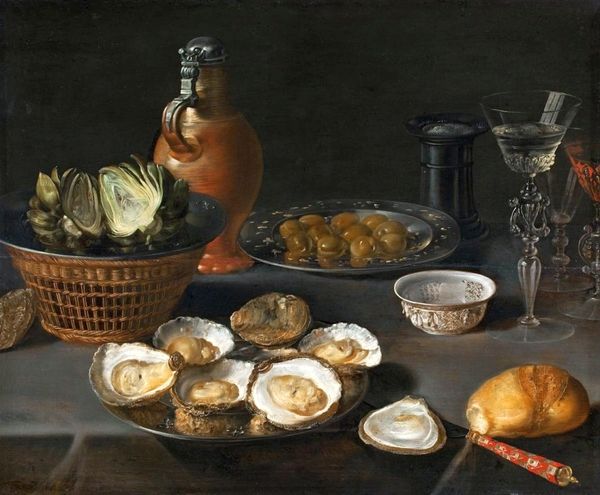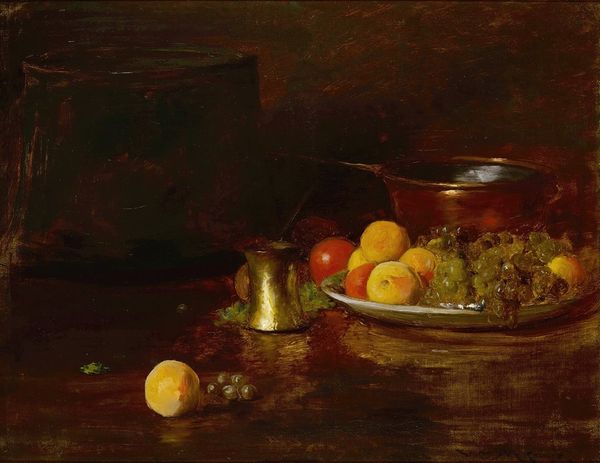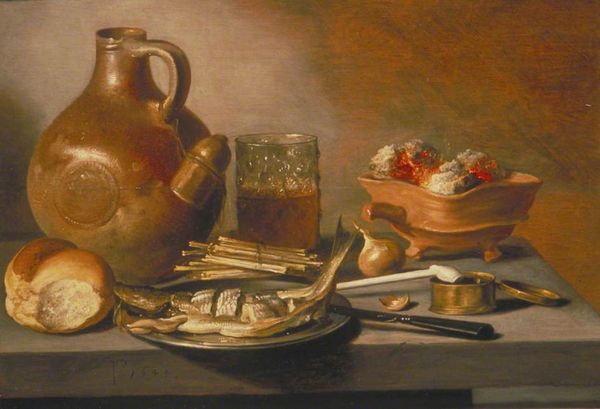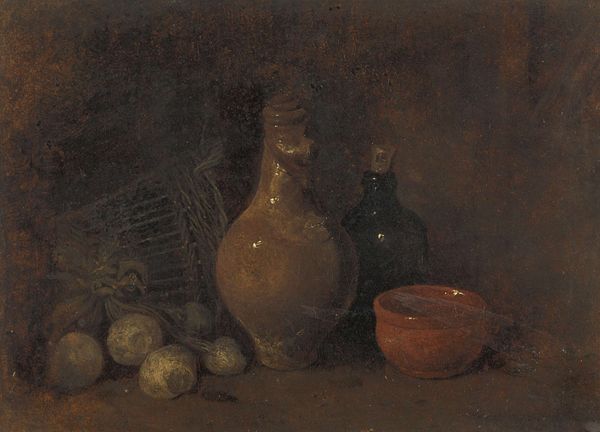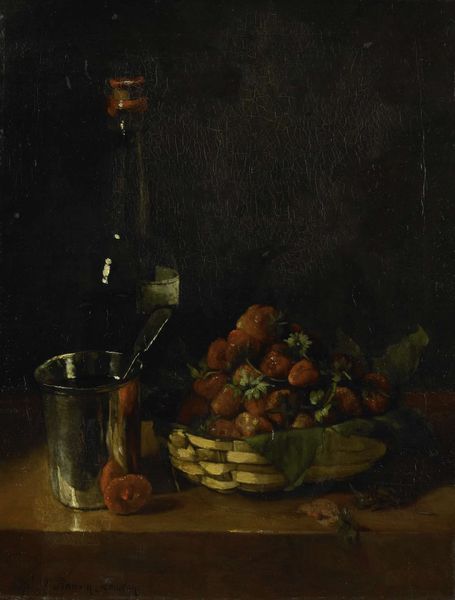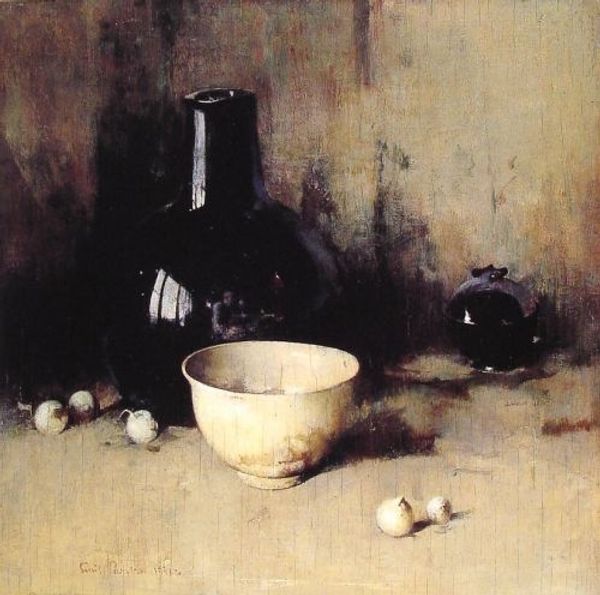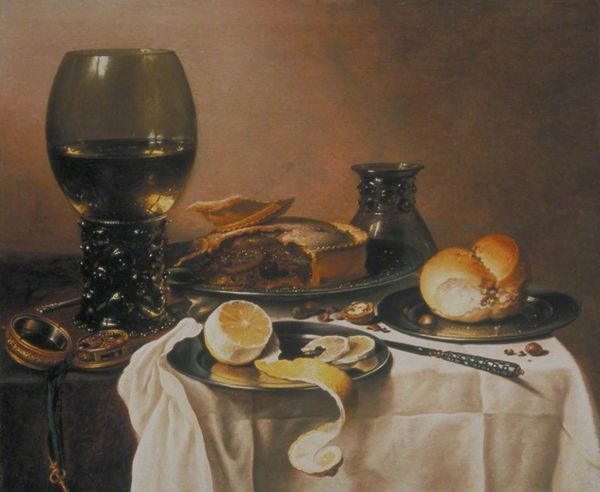
Copyright: Public Domain: Artvee
Editor: Here we have William Merritt Chase's "Still Life with Tea Kettle and Fruit," created around 1905 using oil paint. I find the contrast between the gleaming metal objects and the soft, organic forms of the fruit so compelling. How do you interpret this work, especially in terms of its composition? Curator: Immediately, one notes the interplay of textures. Consider how Chase juxtaposes the hard, reflective surfaces—the tea kettle, the metal canister—against the yielding textures of the fruit, segmented pomegranate in particular. This visual dialectic is crucial. What formal strategies do you observe contributing to the still life's stability? Editor: Well, there's a definite pyramidal structure, isn't there? The kettle's base and the pomegranate halves anchor the composition, and the other elements build upwards. Curator: Precisely. That pyramidal form, a traditional compositional technique lends the arrangement a sense of groundedness, of order. The carefully considered placement of each object directs our gaze. Note, however, how Chase disrupts this classicism. Do you perceive any dissonance, something resisting the overall harmony? Editor: The way the fruit spills out of the bowl a little, maybe? Or how the dark backdrop almost swallows the kettle? Curator: Indeed! These disruptions serve a purpose. They prevent the still life from becoming merely a decorative exercise. This subtle tension enlivens the work, engaging the viewer beyond mere appreciation of skillful representation. It prompts further reflection about visual rhetoric and form. Editor: That's a great point; it definitely pulls you in and keeps you looking. I now have a completely different perspective on the painting and learned so much from just looking at form. Curator: Absolutely! The most rewarding aesthetic experiences are based on thoughtful attention to how intrinsic formal properties give us pleasure and invite multiple ways of seeing.
Comments
No comments
Be the first to comment and join the conversation on the ultimate creative platform.
